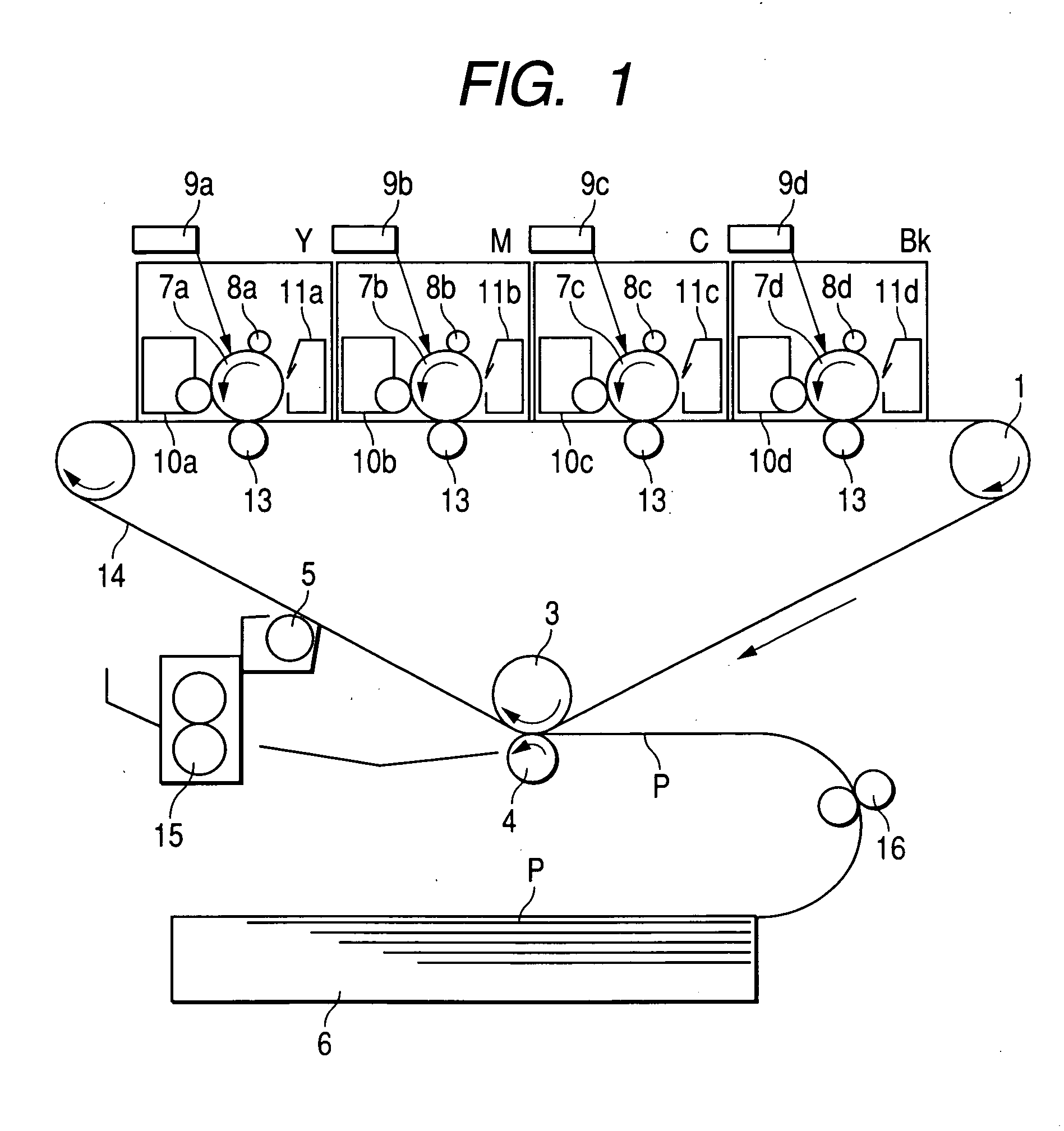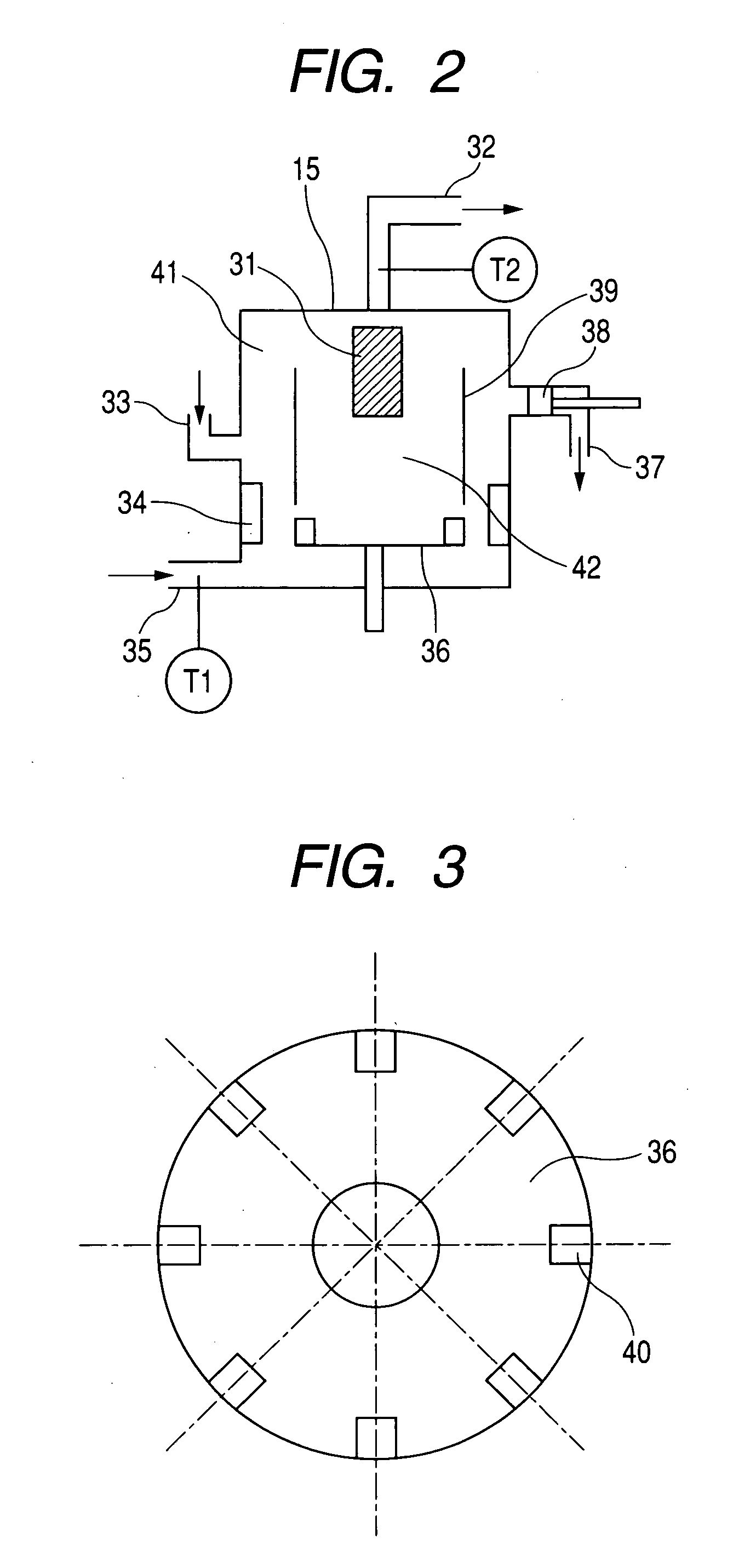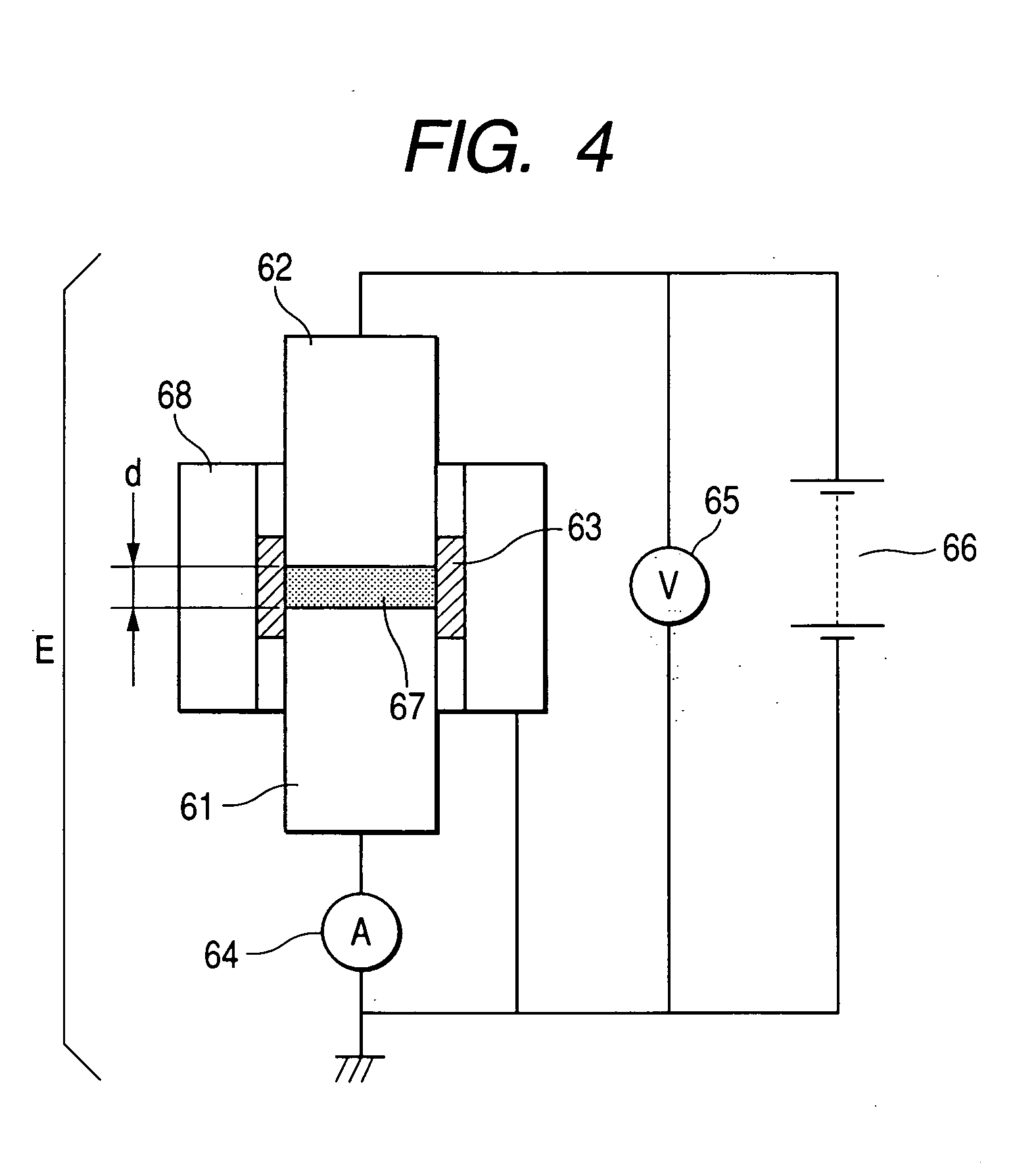Image forming method and iamge forming apparatus
a technology of image forming and forming method, which is applied in the direction of electrographic process apparatus, instruments, corona discharge, etc., can solve the problems of affecting the image quality, and difficulty in reproducing halftones, etc., and achieves high contrast, high image quality, and high gradation.
- Summary
- Abstract
- Description
- Claims
- Application Information
AI Technical Summary
Benefits of technology
Problems solved by technology
Method used
Image
Examples
examples
[0229] The present invention is described below in greater detail by giving specific working examples. The present invention is by no means limited to these examples.
Carrier Production Example A
[0230] To each of fine magnetite particles having a number-average particle diameter of 250 nm and a resistivity of 5.1×105 Ω·cm (intensity of magnetization under 79.6 kA / m: 64 Am2 / kg; true specific gravity: 5.2 g / cm3) and fine hematite particles having a number-average particle diameter of 260 nm and a resistivity of 4.9×107 Ω·cm (non-magnetic; true specific gravity: 5.1 g / cm3), 4.0% by weight of a silane coupling agent 3-(2-aminoethylaminopropyl)trimethoxysilane was added, and these were high-speed mixed and agitated at 110° C. in a container to carry out surface treatment. [0231] (by weight) [0232] Phenol 10 parts [0233] Formaldehyde solution 6 parts [0234] (aqueous 37% by weight formaldehyde solution) [0235] Above treated fine magnetite particles 76 parts [0236] Above treated fine hemat...
production example b
Carrier Production Example B
[0240] To each of fine magnetite particles having a number-average particle diameter of 250 nm and a resistivity of 5.1×105 Ω·cm (intensity of magnetization under 79.6 kA / m: 64 μm2 / kg; true specific gravity: 5.2 g / cm3) and fine hematite particles having a number-average particle diameter of 610 nm and a resistivity of 1.3×108 Ω·cm (non-magnetic; true specific gravity: 5.3 g / cm3), 0.8% by weight of a silane coupling agent 3-(2-aminoethylaminopropyl)trimethoxysilane was added, and these were high-speed mixed and agitated at 110° C. in a container to carry out surface treatment.
(by weight)Phenol10 partsFormaldehyde solution 6 parts(aqueous 37% by weight formaldehyde solution)Above treated fine magnetite particles60 partsAbove treated fine hematite particles24 parts
[0241] The above materials, and 5 parts by weight of 28% by weight ammonia water and 10 parts by weight of water were put into a flask, and were thoroughly mixed. At this point, the dissolved oxy...
production example c
Carrier Production Example C
[0243] To each of fine magnetite particles having a number-average particle diameter of 250 nm and a resistivity of 5.1×105 Ω·cm (intensity of magnetization under 79.6 kA / m: 65 μm2 / kg; true specific gravity: 5.2 g / cm3) and fine hematite particles having a number-average particle diameter of 260 nm and a resistivity of 4.9×107 Ω·cm (non-magnetic; true specific gravity: 5.1 g / cm3), 3.0% by weight of a titanium type silane coupling agent isorpopyltri(N-aminoethyl-aminoethyl)titanate was added, and these were high-speed mixed and agitated at 110EC in a container to carry out surface treatment.
(by weight)Phenol10 partsFormaldehyde solution 6 parts(aqueous 37% by weight formaldehyde solution)Above treated fine magnetite particles76 partsAbove treated fine hematite particles 8 parts
[0244] The above materials, and 6 parts by weight of 28% by weight ammonia water and 8 parts by weight of water were put into a flask, and were thoroughly mixed. At this point, the ...
PUM
 Login to View More
Login to View More Abstract
Description
Claims
Application Information
 Login to View More
Login to View More - R&D
- Intellectual Property
- Life Sciences
- Materials
- Tech Scout
- Unparalleled Data Quality
- Higher Quality Content
- 60% Fewer Hallucinations
Browse by: Latest US Patents, China's latest patents, Technical Efficacy Thesaurus, Application Domain, Technology Topic, Popular Technical Reports.
© 2025 PatSnap. All rights reserved.Legal|Privacy policy|Modern Slavery Act Transparency Statement|Sitemap|About US| Contact US: help@patsnap.com



